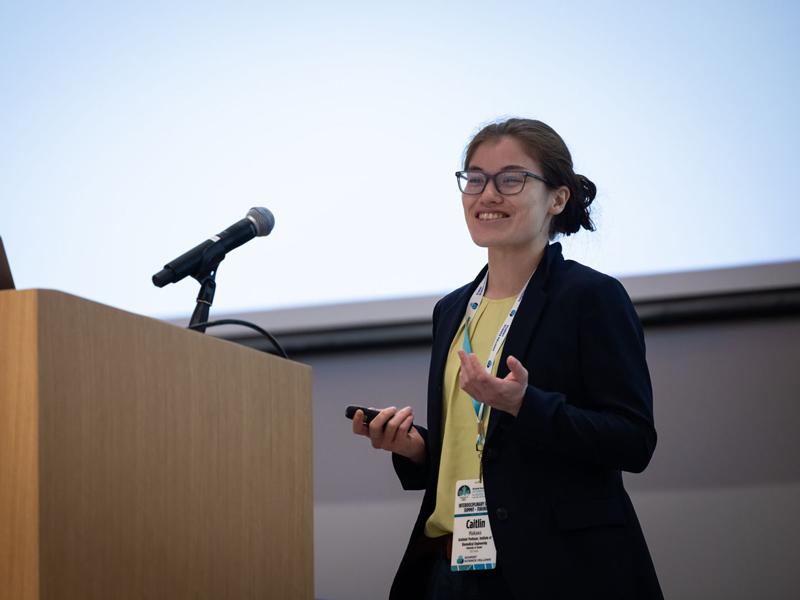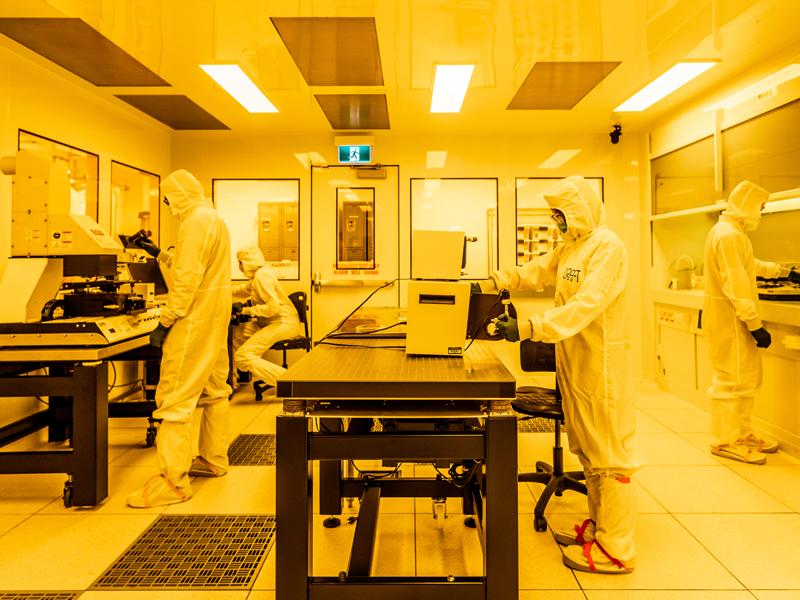Academic research often occurs in silos, but for some researchers, interdisciplinary collaboration is fundamental to satisfying their intellectual curiosity. Caitlin Maikawa is one of them. A Senior Schmidt Science Fellow and now an assistant professor at the University of Toronto, Maikawa leads her own lab out of the Institute of Biomedical Engineering. The Maikawa Lab develops cutting-edge technologies with a number of clinical applications and comprises scientists from biology, material science, chemistry and medicine, all working as a close-knit team.
“My engineering education emphasised the importance of bringing in people with different expertise and different stakeholders. It emphasised teamwork, and I think that made a lot of sense,” she says. “I grew up playing sports, specifically ice hockey, and through playing team sports I learnt the value of working together and everyone having a different role on the team.”
Maikawa’s research career took off when she was a PhD student working on the development of dynamic polymer-based insulin formulations that could be deployed in an autonomous system for treating diabetes. These insulin formulations need to respond quickly to changes in glucose levels to be effective. “Having insulins with faster kinetics is important,” Maikawa says. “Diabetes treatment is heading towards autonomous artificial pancreas devices where you have an insulin-infusion pump paired with a glucose sensor. Using an algorithm, the information gathered from the glucose sensor can inform autonomous insulin dosing.”
These projects are application-focused. They are designed to tackle clinical problems, and input from healthcare specialists working with patients was vital to their success. These conversations help steer the engineering and technological approach. They also inspire Maikawa to ask, “What’s next?” For her postdoctoral work, that meant a pivot to macro-scale devices for non-invasive treatment pathways and targeted drug delivery, investigating ways to develop a pill that could administer insulin or other protein therapies.
“One of the key parts of my postdoc was thinking about how materials can respond to stimuli in the gastrointestinal tract and throughout the body. And how we can use materials that change in response to stimuli in the body like, for example, changes in glucose, to trigger more effective drug delivery,” she says.
Today, Maikawa’s work pulls on all these threads, digging deeper into the clinical potential of material science and bioengineering to develop pills that could be taken orally and yet be super-targeted. Maikawa’s research group also explores new ways of monitoring disease in the gastrointestinal tract.
“We can actually detect things that are local or specific to disease sites, so I am interested to see if we can develop new technologies that let us better and more easily monitor how our body is changing,” she says.
Maikawa thinks the expertise of a microbiome specialist could advance this research. Her chances of finding one are good. Toronto takes proactive measures to foster an interdisciplinary research community, with forums for researchers to have conversations about shared interests and what they are working on. As Maikawa says, this is often how interdisciplinary collaborations start.
Times Higher Education has partnered with Schmidt Science Fellows to develop a new ranking measuring universities’ contribution to interdisciplinary science. Find out how to participate.
Find out more about Schmidt Science Fellows.


comment